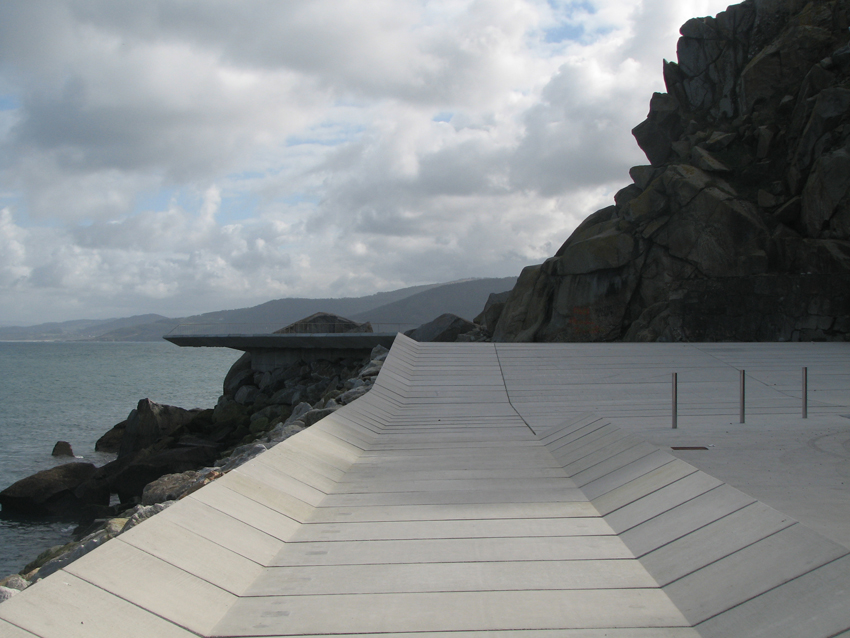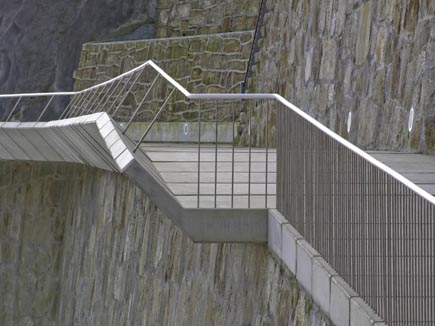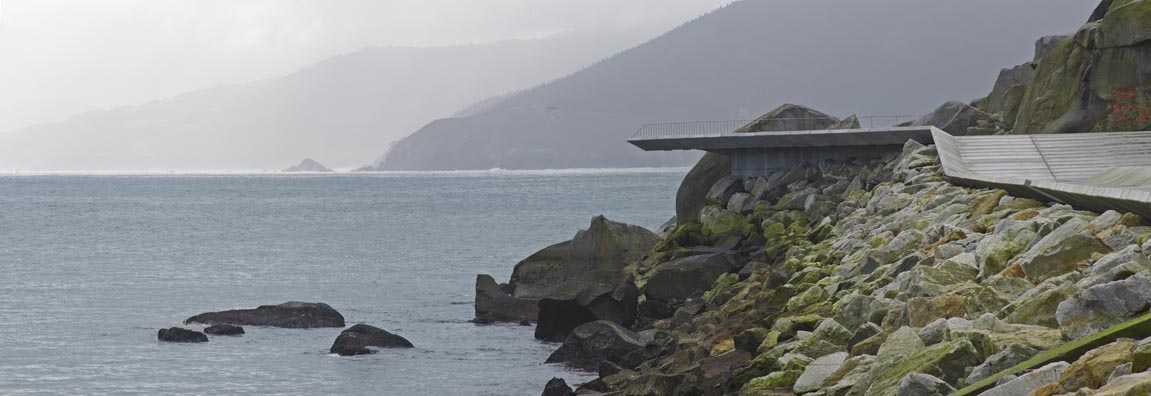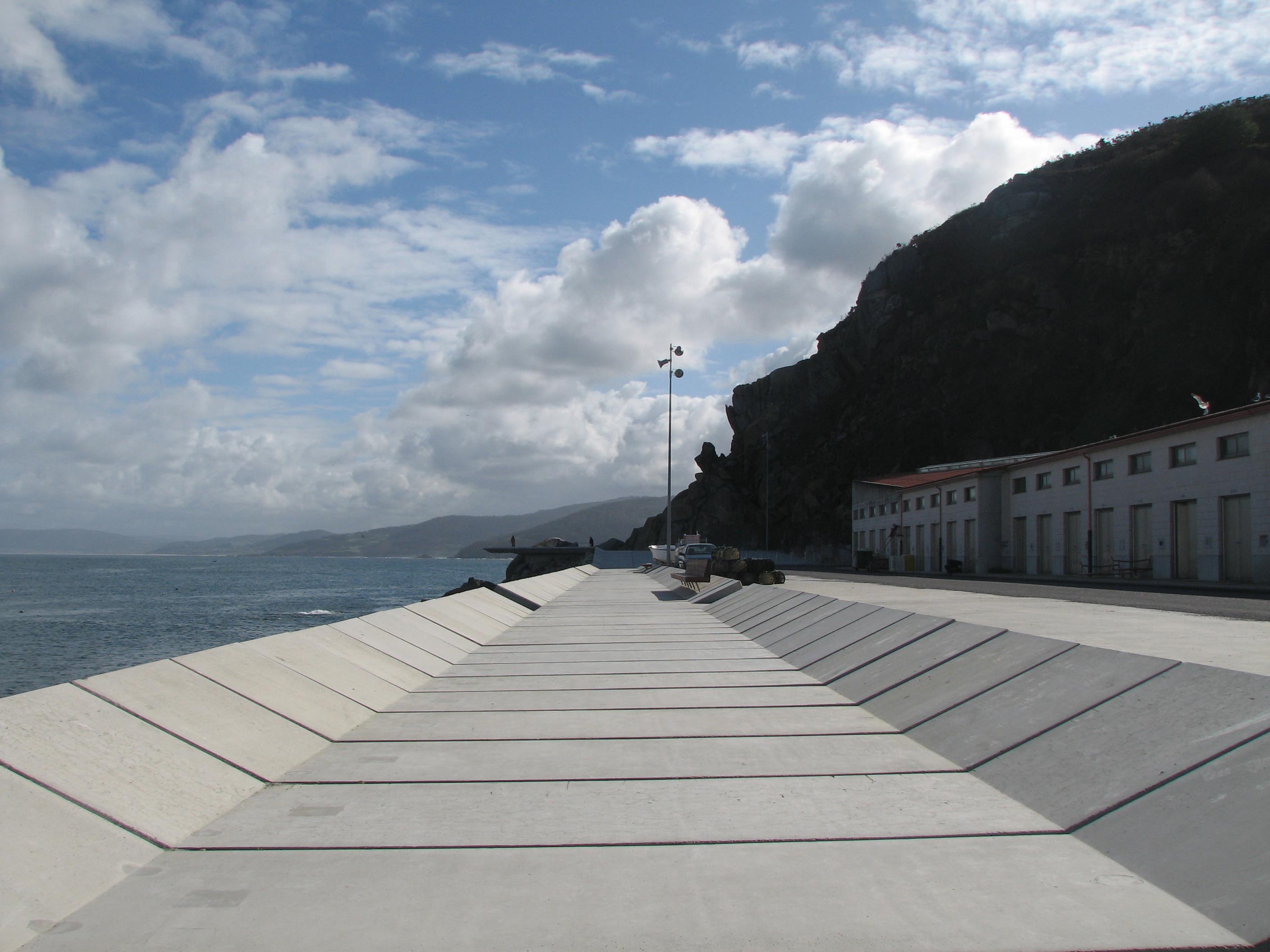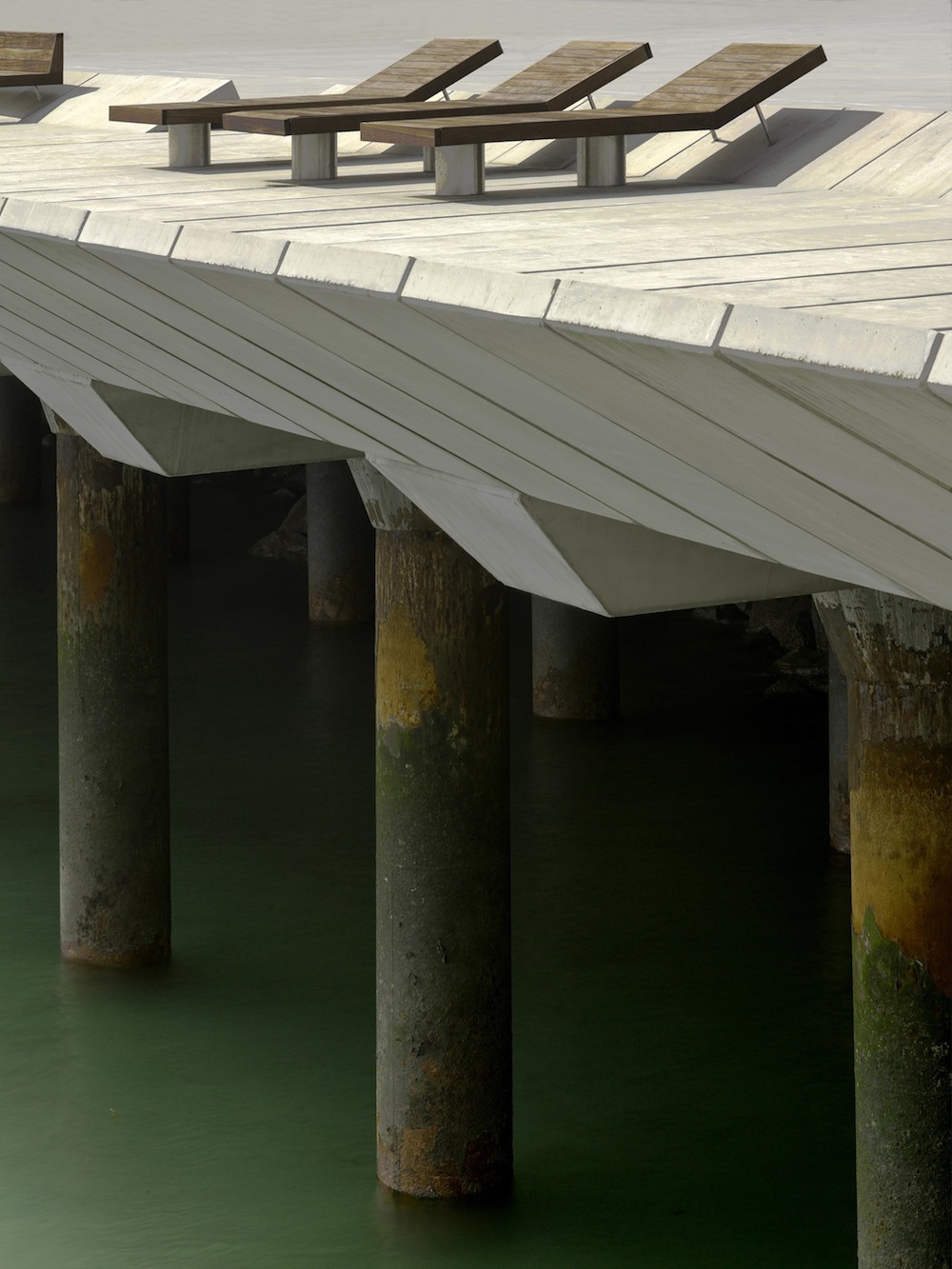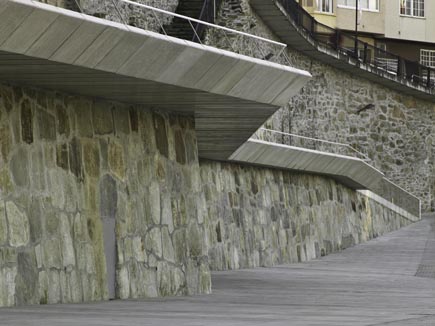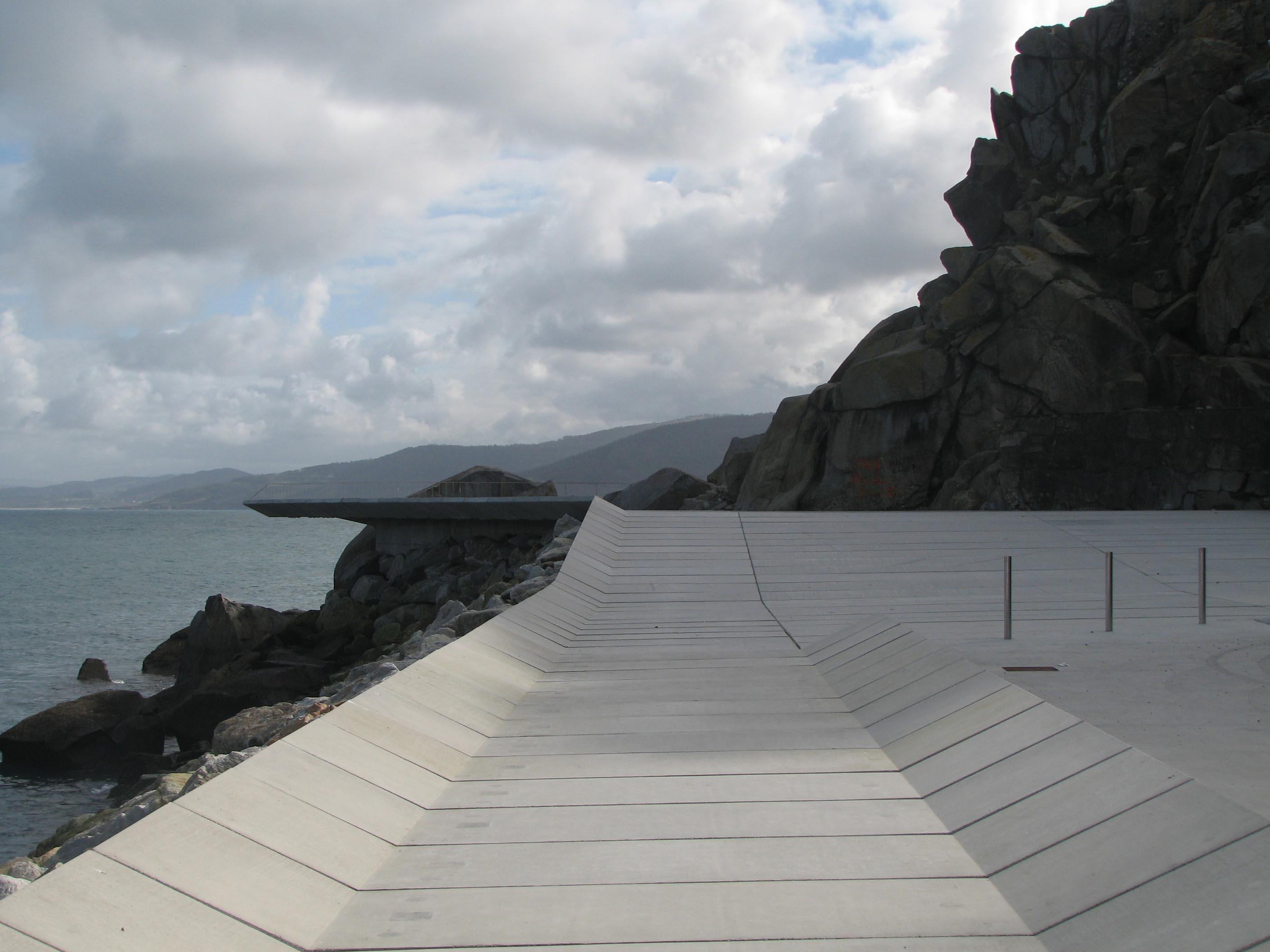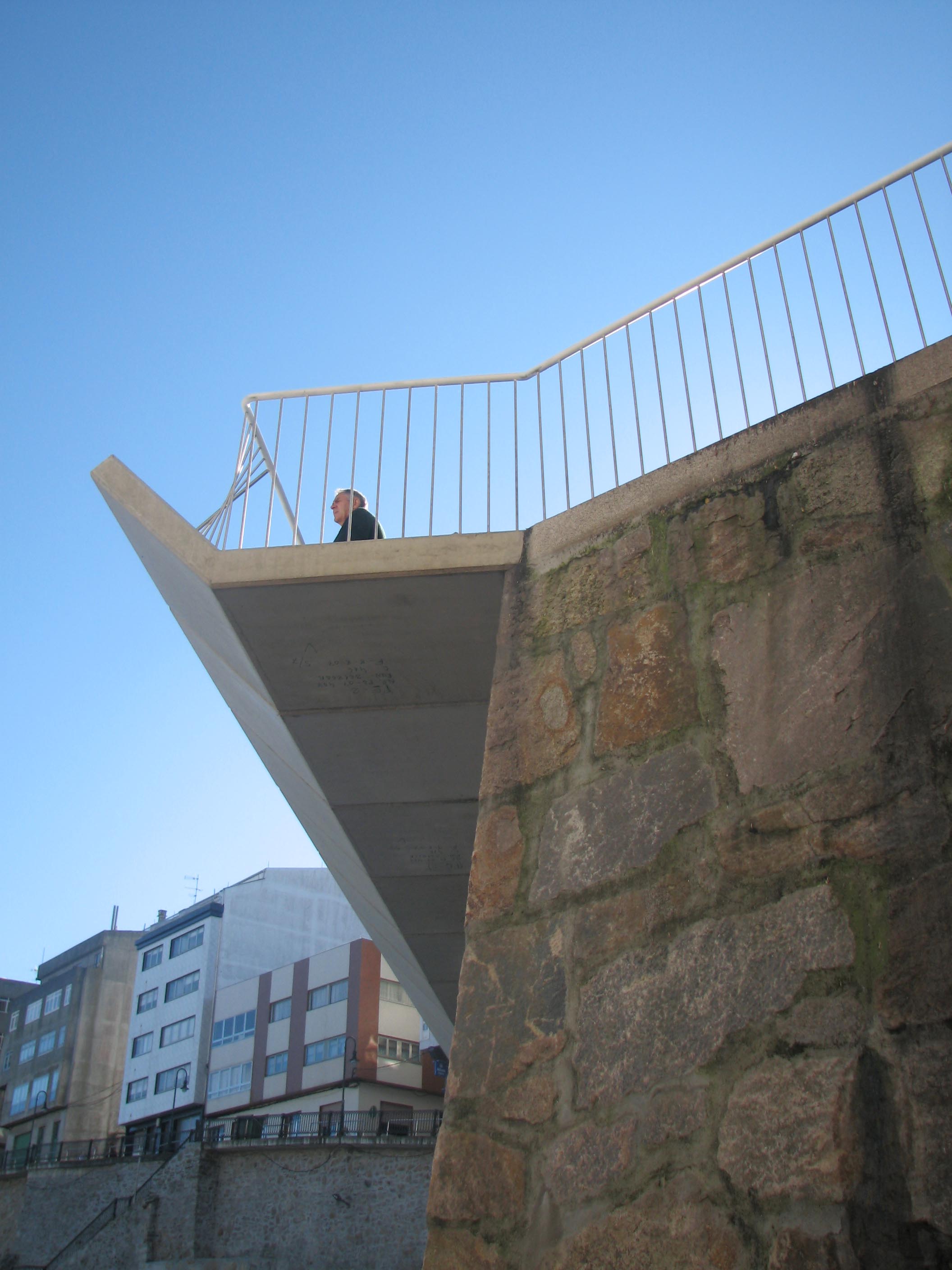Previous state
After the 1960s, the excesses of real-estate speculation, imprecision of building regulations, fragmentation of urban land into a multitude of small nuclei and even the appearance of an eclectic imaginary imbibing from foreign architecture imported by a population that has been historically habituated to emigration, gave rise to the proliferation along the Galician shoreline of an urban phenomenon popularly dubbed “feísmo” (uglyism). The lack of alignment of the buildings, their irregularity in terms of height, the profusion of unfinished constructions, the cacophonous coexistence of styles and materials, the surfeit of inordinate ornamentation, and the hotchpotch of incompatible uses ended up having seriously deleterious effects in many towns and villages of the idyllically beautiful Costa da Morte.Malpica de Bergantiños, a town built on a peninsula and looking out over the fishing port that runs around the curved profile of its eastern flank, was no exception to the phenomenon. Thanks to the uneven topography, the wharfs are at a lower level than the streets of the town and are reached by means of a series of platforms and retaining walls joined by ramps and steps. With the decline of whaling, which had given the town considerable prominence in the nineteenth century, and the disappearance of the canning industry in the mid-twentieth century it became a minor port, living off coastal fishing from small, independent boats.
After years of neglect, the port installations were obsolete as well as showing the effects of lack of criteria in the way they were used and disorder in their forms and volumes. The stone retaining walls were in a poor state of disrepair, while the platforms were indiscriminately occupied by boats, cars and even some more or less provisional and badly placed buildings, which included several warehouses, a repair workshop and some Red Cross installations. Besides complicating the relationship between the town of Malpica and its port, this situation meant that access to some of the emblematic places along the seafront was obstructed, as was the case with the Murallón Lookout, a rocky ledge of the Punta da Plancha at the end of the southernmost wharf from which one may enjoy beautiful views of the town and the ocean.
Aim of the intervention
The need to renovate the port installations and restore the landscape along the maritime front was sufficient incentive for the local fishermen’s association and the public entity managing the ports of Galicia to come to agreement over carrying out a project that aimed to re-establish the relationship between the everyday life in the town and that of the port. The construction of a new wide wharf complete with an elevator was to provide a space for adequate moorage and maintenance of the boats, while also making it possible to free the port’s platforms so that they could be used as public spaces by all the townspeople.Description
The intervention took in the area extending from the slope coming down from the town through to the Murallón Lookout, although it is only part of a bigger project that will eventually cover the whole maritime front. The characteristic stone walls that retain the memory of the place have been respected and repaired. The warehouses and repair workshop have been moved to a nearby industrial building, while the platforms have been cleared of boats and vehicles for the exclusive use of pedestrians. They have been covered with prefabricated concrete slabs representing different variants of the same module with a view to their being adapted for different situations, serving the dual function of ground cover and structural element, since the upper face is the finished paving while one edge juts out over the edge. Each piece extends beyond the stone wall that supports it, consolidating its cornice and protecting it from the rain. The outer part of the projecting edge folds gently upwards offering an element of protection against falling to walkers without obstructing the scenic views. Sections of the concrete folding up at an angle on the other side constitute a barrier that prevents cars from encroaching on the pedestrian zone. The juxtaposition of these pieces creates a route that goes as far as the Murallón lookout, which has been enlarged and separated from vehicular traffic.Assessment
Bringing about a complete reversion of the depredations of “uglyism” would require a series of interventions that were probably beyond the financial reach of a municipality of the size of Malpica. Nevertheless, by means of applying a constructive solution that is at once austere and effective, this renovation of the port has endowed the maritime front with a treatment that is sufficiently ordered and unitary to counteract their effects to a considerable extent. The project has made the most of conditions that characterise the port as a haven and place of exchange and relationship in order to transform it into a public space that generously offers all citizens the chance to enjoy contemplating the tasks being performed by the fishermen and a coastline of exceptional beauty.David Bravo Bordas, architect
[Last update: 02/05/2018]


